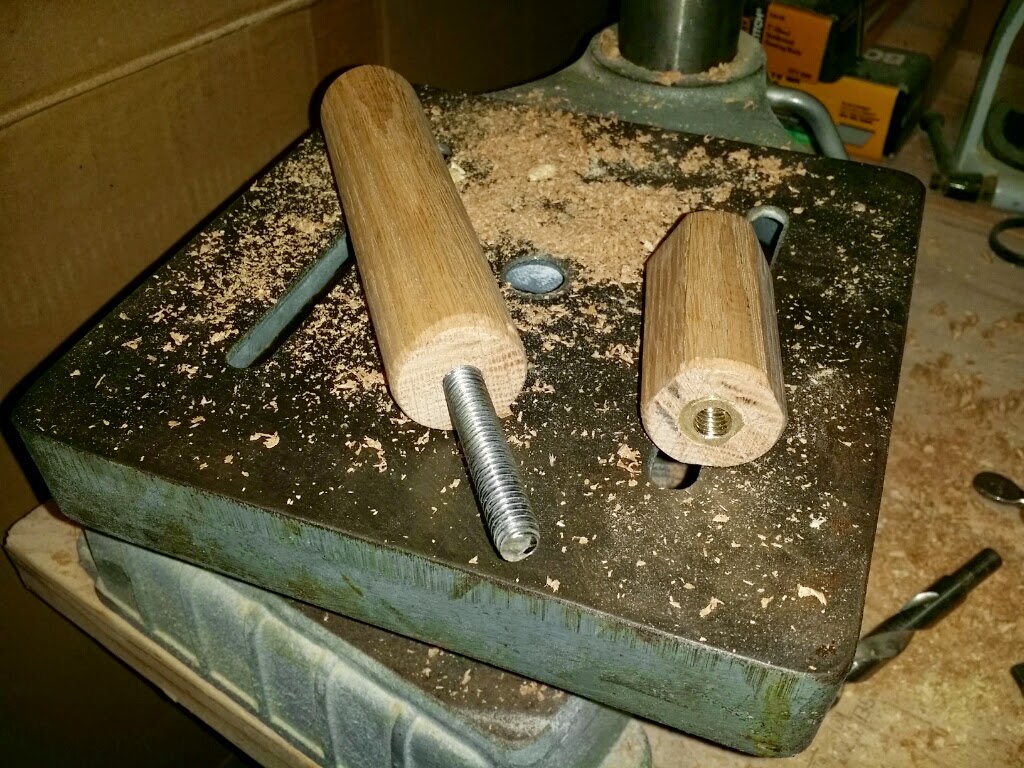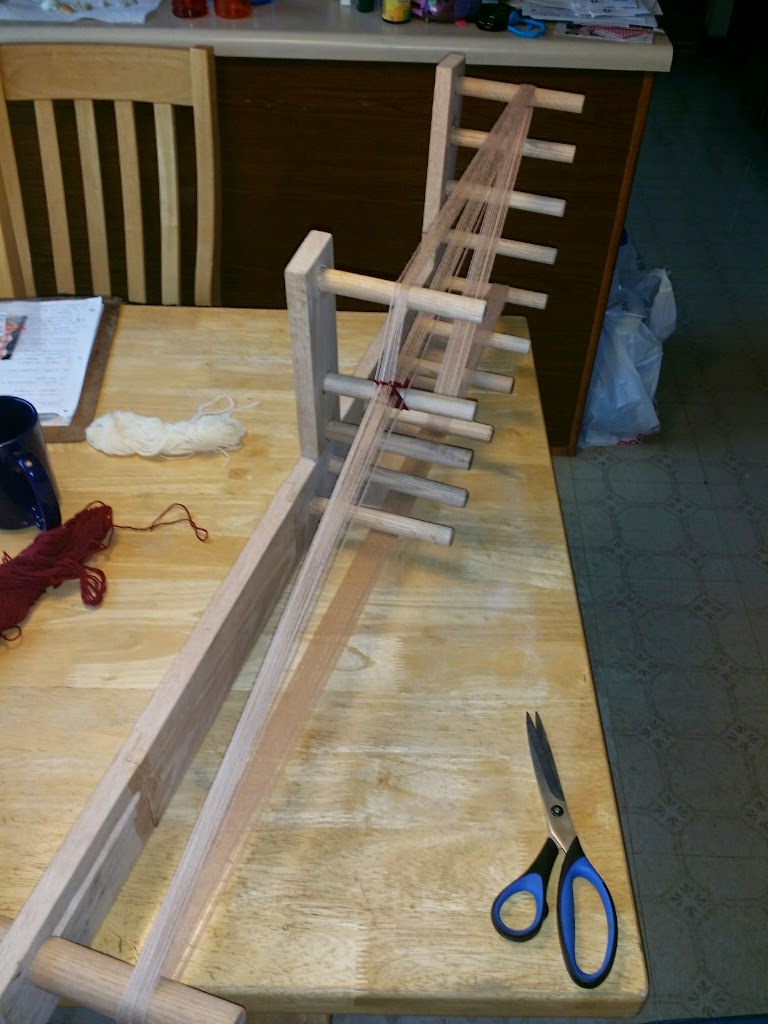I've been very busy doing lots of stuff lately. I have a ton of pictures which have simply been waiting to be uploaded. With summer drawing to a close soon I've been spending as much time on my outside projects as I can. While doing that, however, I found some time to do a bit of weaving.
I had seen some looms in the past but clearly I didn't use any pattern for the one I have made. Follow along and you'll understand why I say that.
To create the knob I drilled a large hole in the dowel and then a smaller, deeper hole to allow the bolt to penetrate into. I then insert a threaded brass fitting which would allow the dowel to become a threaded knob while hiding all the metal pieces.
The construction was done with oak planks from Home Depot. I used basic lap joints and peg and dowel assembly so that no metal fasteners would be visible on the completed loom.
After dry fitting I glued and clamped the loom.
After loom assembly I placed some cut dowels in a random spacing. Here is the major fail of the project. I tried to place as many dowels as possible. The more dowels used, the longer the weaving could be. What I didn't do is factor in the layout of the cordage. The dimensions of my loom would not properly allow for that many dowels. To operate the loom the weaver must be able to separate the warp threads and the proximity of the dowel placement prevented the proper operation of the loom. I didn't find that out until the entire loom was done and I tried to warp it!
Dowel placement was marked and a drill press was used to make all of the holes.
After a dry fit all the dowels were glued into place.
At this point I thought I was done. This picture was taken at a friends house. She tried to help me warp my new loom and that's when we discovered the design flaw. By not using a proper pattern the knob you see on the right of the following picture was MUCH too close to the rest of the loom. The style of the design wasn't the problem but the size was. I remembered the looms I had seen in person and made mine about twice as large as it probably should have been. To resolve the problem I would have to extend the board where the knob was inserted.
I made a cut between the knob and the rest of the loom. I then inserted about a 12 inch board using lap joints to extend the length of the loom.
Here you can see the spliced piece extending the loom. The loom is now incredibly long compared to others I've seen. It seems to have worked out though. As it turns out having spent a few dozen hours weaving on it, I rather like the size. Having a loom where the heddle is about a full arm's length away gives more working room. I can work on about 10~12 inches of weaving before I have to loosen the loom and rotate the warp threads around. I think that if I HAD made a smaller loom I would have been disappointed and probably upscaled it eventually anyway.
For my first weaving I did a simple solid color. I had recently received a large quantity of wool thread as a hand-me-down. I started with a small size yarn to play.
Here is the shuttle I made from a piece of scrap maple. I used a scroll saw to cut the shape and then used a Dremel to round out the corners. You can see that I burned the wood a bit but I was in such a hurry to try it out I haven't yet fixed that.
OK... I'm hooked.
Second attempt involved same size thread, but a little more color this time around.
Yup... I'm hooked.
Third attempt.
This time a larger size yarn and a bit wider.
Now... what I really made the loom for in the first place. I wanted custom tapes to be used for my greenwork shirt. I wanted them to be mostly white with some green spots. I wanted them to match the design of the shirt but be more custom that your average over the counter white linen tapes.
I used the following linen thread.

I wove a solid white tape to get a perspective on size and feasibility on my loom. I like the result a lot but it was about twice as wide as I wanted. I cut down the number of warp threads and did another run.
This time I used the same thread but included 2 strands of green linen as well to provide a specked green line on the tape. I LOVE THE RESULT. This was the primary reason I made the loom. I needed this tape to finish my greenwork shirt and I really love the outcome. This produced about 7 foot of usable tape.
I have since done about 20 weavings totaling a few hundred feet. I have no idea what I'm going to do with it all yet. I find it very relaxing to weave in the evenings while watching TV. Now that football season has started I imagine I'll be making more with no real purpose. :-)












































































